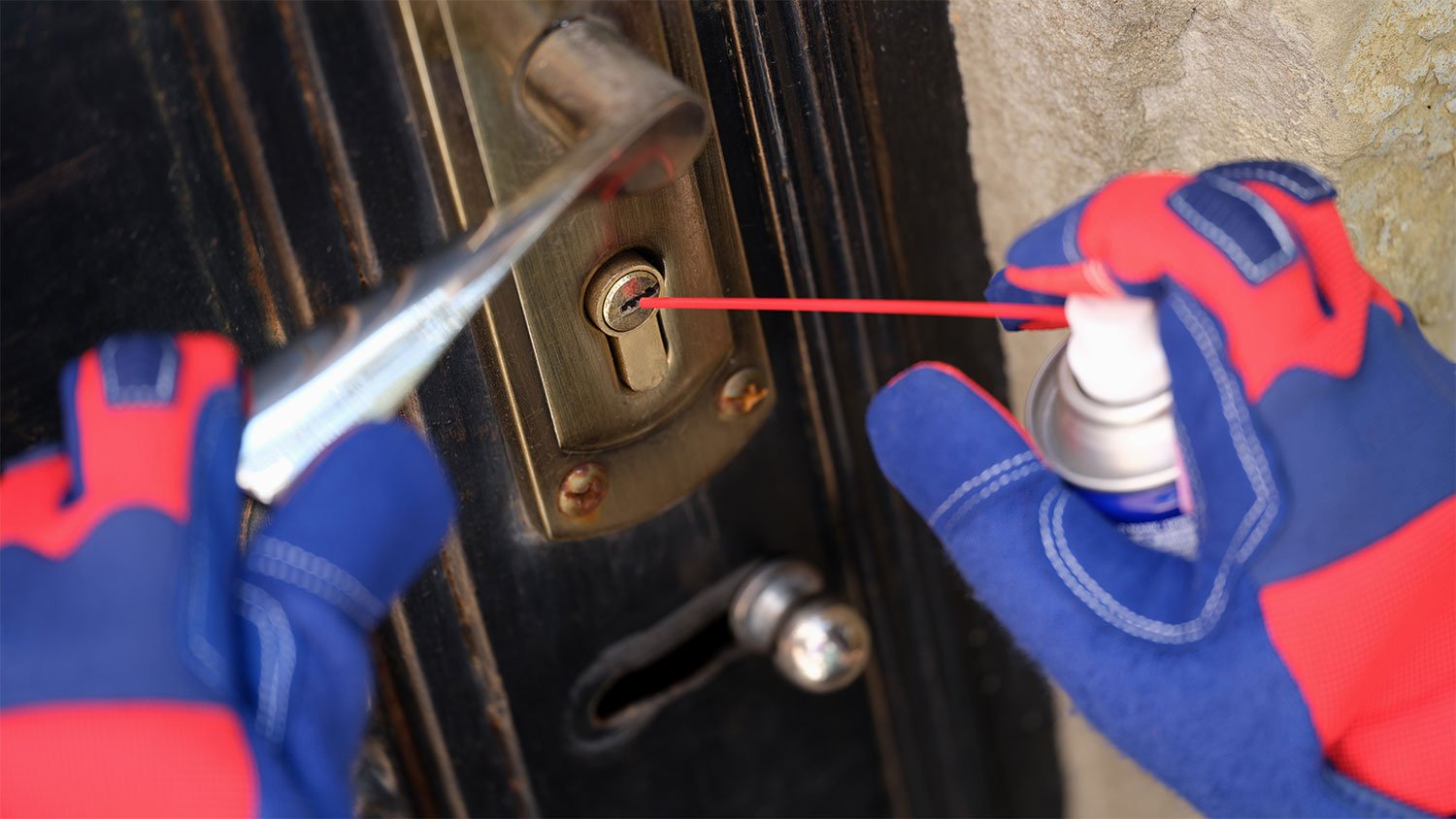
Wondering how much a locksmith costs? Discover locksmith prices, key cost factors, and tips to save on home lockout, rekeying, and installation services.
The key is the product you use


Do you have a key that won’t turn in a lock? Maybe your key won’t even go in the lock, or maybe you have to use excessive force to turn it. Before you accidentally break the key inside your lock, try one of these easy lubrication options to fix your problem.
Teflon-based dry lubricant is preferred by some locksmiths over other options, like graphite or WD-40. It’s ideal because, besides lubricating your lock, it repels water and dust. That means that once you fix a lock with this type of lubricant, you can expect the lock to be in good shape for a long time.
In addition to the dry version, you can get Teflon-based lubricant in aerosol form. You might find that this option is easier to apply. When you spray this into your lock, this product creates a thin coating inside the lock. The coating repels dirt, dust, and chemicals. It has no silicone and is a long-lasting solution.
Powdered graphite comes in small tubes. You can easily squeeze the product into the lock. After that, take your key and distribute the graphite—place the key in and out of the lock, and then turn the key to the right and left.
Dry graphite can work well, but if you live in a humid area, the moisture can turn the powder into a gunky substance. In these cases, using a Teflon or silicone-based lubricant might be better.
Graphite lubricant is also available in graphited fluid form. You apply the oil, and the carrier solvent evaporates while leaving a graphited film inside the lock. It helps repel moisture, so it’ll keep your locks from freezing. The film is also stable in extremely high temperatures. It’ll also keep rust away, and it has zero volatile organic compounds (VOCs).
If you don’t want to buy a bottle of powdered graphite, you can use a run-of-the-mill pencil instead. It’s best to start with a sharpened pencil. Rub the point along the edge of your keys until it’s covered in a coat of graphite. Next, place the key in the lock. Repeat as many times as necessary until the key slides easily into the lock.
It’s not an ideal solution for the long term, but if you don’t have time to run to the store to buy products, this is a decent temporary workaround.

Although it might be tempting to reach for your regular can of WD-40 to lubricate your lock, it’s probably better if you don’t. Unfortunately, regular WD-40 attracts dust and dirt and dries up over time. This means that it won’t be long before your lock starts freezing up and not working correctly. Plus, the product can leave a greasy residue on your keys, which can easily transfer onto your clothing or bags.
Instead, opt for WD-40 Specialist lubricant. This repels dust and dirt, and you can safely use it on nearly all types of door locks.
Consider de-icer and lubricant combos if you live in an extremely cold area. It’s great if your car or house lock is iced over because it’ll de-ice and lube it at the same time. Usually, these are pressurized aerosol products, so all you have to do is spray it directly into the lock. Typically, using the de-icer and lubricant once should be enough to keep your locks from freezing again for some time.
If you’re sensitive to chemical products, consider a non-toxic, mineral-based lubricant. These repel dirt and dust and also have rust inhibitors to help your locks last longer. They can also prevent your locks from freezing.
Synthetic lubrication oils with tiny Syncolon (PTFE) powder are another option for your stubborn locks. The solvent in the oil carries the dry powder. So once you apply it to your lock, the solvent dries quickly, leaving the powder behind. The layer of PTFE offers the lubrication you need for your locks, and it doesn’t attract dust.
Some companies produce lock lubricants with a proprietary blend. Although they keep the contents a secret, it’s known to be a “proprietary blend of base oils and solvents.” It seems to be a powerful solution, especially for super old and rusted locks.
If you’re having difficulty fixing your lock even after applying lubricant or simply can’t delay getting into your locked space, call a locksmith near you to get professional help. They’ll be able to assess and fix the solution quickly without you having to run to the hardware store or potentially make the problem worse.
The average locksmith visit costs $100 to $240, but it’s well worth the price tag for peace of mind about your home’s safety. And if you’re tired of dealing with the disadvantages of a traditional key and lock, consider the advantages and vulnerabilities of electronic locks.
From average costs to expert advice, get all the answers you need to get your job done.

Wondering how much a locksmith costs? Discover locksmith prices, key cost factors, and tips to save on home lockout, rekeying, and installation services.

Discover the average deadbolt installation cost, price factors, and tips to save on your project. Learn how to budget for secure home upgrades.

Wondering how much does it cost to copy a key? Discover prices, key types, and cost-saving tips to help you budget for your next key duplication.

Know the 5 common signs your locks may have been tampered with and take immediate action to improve home security and prevent a burglary.

Deadbolt locks add an extra layer of security. Learn about the different types and benefits so you can choose the perfect one to protect your home.

Is your glass sliding door as safe and secure as it can be? This common entryway may be the window into your backyard, but common issues like an old lock or dirty track can make it more vulnerable. Use these six tips to fortify your sliding door.